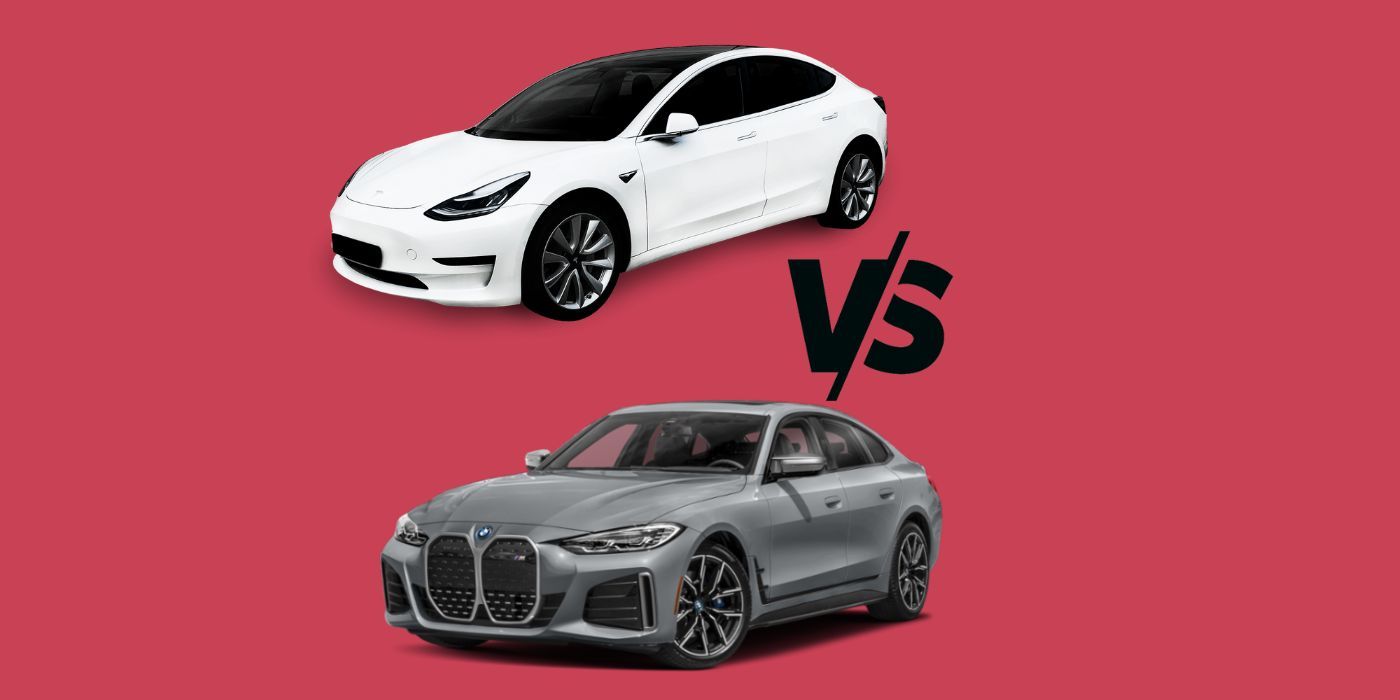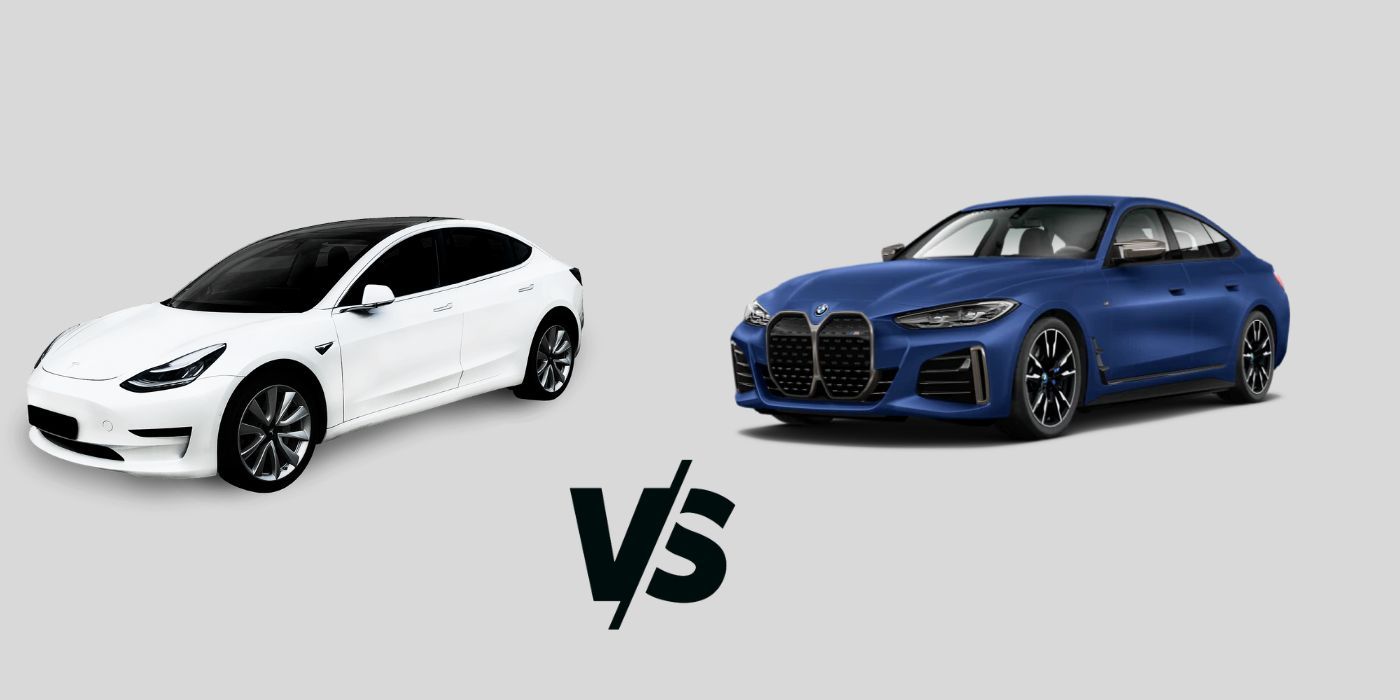The Tesla Model 3 Performance and BMW i4 M50 pack more punch than most EVs, but in a side-by-side comparison — which one takes the win? While Tesla has established itself as an EV-only brand, BMW’s Motorsport (M) division has thrilled fans with a historic lineup of high-performance vehicles bearing aggressive styling and an appetite for high speeds. Both models are ideal for drivers who want speed and power.
Starting at $53,990, the Tesla Model 3 can go from 0 to 60 mph in 3.1 seconds, making it one of the quickest EVs available. The sedan achieves this through its dual-motor AWD system. It also features a max power of 450 hp and 461 lb-ft of torque. With a starting MSRP of $68,700, the BMW i4 M50 offers 536 hp, 586 lb-ft of torque, and a 0-60 mph time of 3.7 seconds. Based on these specs, the Model 3 is slightly quicker than the M50, though the latter has a higher power output.
Tesla Vs. BMW: Range & Performance
Aside from how fast the EVs are, how do they fare in terms of range efficiency? Tesla claims the Model 3 Performance variant can travel for up to 315 miles on a single charge. Additionally, this model is recommended for those who need to travel longer distances in extreme temperatures. Meanwhile, the M50 should be good for up to 270 miles before needing a charge. It's worth noting that certain driving habits and external factors can deplete an EV's range faster, so these numbers are just estimates.
While the Model 3 can be driven on city roads, Tesla's Track Mode enables drivers to get the most out of their EVs on street circuits. Tesla developed Track Mode mode to optimize the EV's critical components like stability braking, traction control, and cooling system. The i4 M50 promises impressive agility and handling through a variable sport steering wheel and an adaptive M suspension. Additionally, drivers will be able to take advantage of more responsive braking thanks to the powerful M sport brakes which BMW claims work well with the 19-inch M two-color wheels.
When it comes to charging, it's difficult to outdo Tesla's Supercharging network, mainly because of its vast presence and quick speeds. At a Supercharger, the Model 3 can add up to 175 miles in 15 minutes. The BMW also features impressive fast charging capabilities with 10 minutes at a DC fast charger claimed to provide up to 97 miles of range. While both models are high-performance EVs, the Model 3 is quicker, charges faster, and qualifies for a $7,500 EV tax credit.


